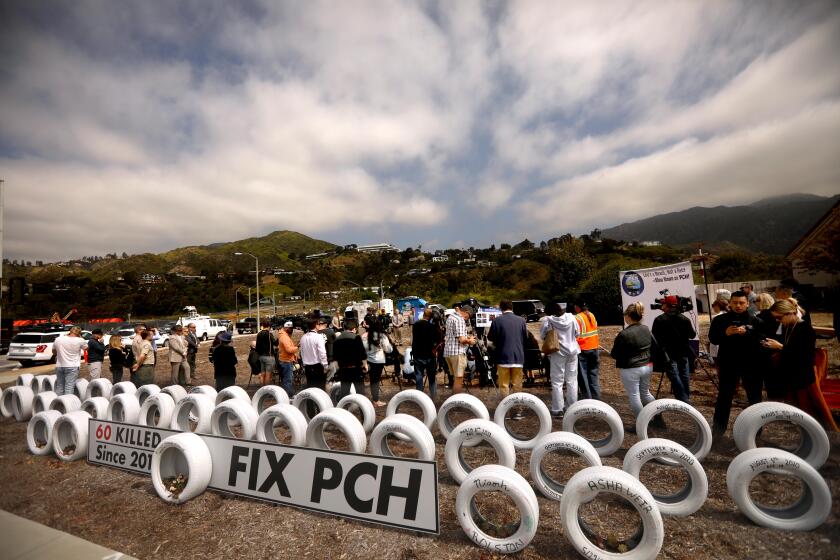Radio Blackout Puts 2 Airliners Perilously Close
Two jumbo jets approaching Los Angeles International Airport on a collision course came within about two miles of each over--half the authorized minimum distance--when air traffic control radios failed this week, union and federal officials say.
The failure Monday night of the radio and backup systems in one control sector at the Southern California Terminal Radar Control Center in San Diego lasted about 15 minutes, but controllers switched quickly to other equipment and reestablished radio contact with the planes within 20 seconds, according to Tony Vella, a local official with the National Air Traffic Controllers Assn. Radar coverage was not affected.
Because the pilots did not report the incident, it was not known whether either plane found it necessary to take evasive action. Both aircraft--a Trans World Airlines Boeing 767 and a French Line DC-10--landed at LAX without incident a short time later.
Acknowledging the incident, David Hinson, chief of the Federal Aviation Administration, said his agency is “working aggressively to minimize the impact of power interruptions on the system.”
Officials said they are unable to estimate how often aircraft pass closer to one another than permitted under FAA rules. But controllers, without wanting to be quoted by name, say that it probably happens an average of at least once a day across the nation.
Vella said that even though their radio equipment is less than 3 years old, controllers at the San Diego control facility--which handles approaches and departures at LAX, Ontario, Burbank, John Wayne and Lindbergh Field airports--experience radio failures daily. These failures are among scores of air traffic control equipment problems reported nationwide in recent months.
Although no air crashes have been blamed on controller equipment failures, commercial air traffic is frequently delayed, especially around major metropolitan areas. Monday’s radio blackout delayed 16 flights.
Last fall, the failure of two backup power-generating systems blacked out all radar and radio communications at an important Northern California air traffic control center for about half an hour.
In that case, the 60 to 70 planes affected switched to other radio frequencies at other FAA facilities and were directed into holding patterns until the problem was resolved. About 100 planes remained grounded at airports across Northern California, and the ripple effect delayed flights across the country.
Pilots are trained on which procedures to follow if radar or radio systems fail at one of the control centers. In most cases, they switch to alternative frequencies and talk to other air traffic control facilities, some of which have coverage that overlaps the coverage of the systems that have failed. The other facilities, using telephones, talk to the center where the failure occurred, relaying routing instructions to the pilots.
“It’s not a terrible crisis when something like this happens,” said Rick Bergholz, a veteran airline pilot. “You revert to procedures in the manual. There are people to call, and you call them and tell them where you are.”
Bergholz said pilots quickly recognize the loss of radio contact.
“There’s normally almost continuous chatter on the frequencies,” he said. “You figure it out pretty fast.”
Bergholz noted that airliners are equipped with on-board collision-avoidance systems that sound alarms if planes get dangerously close to one another.






